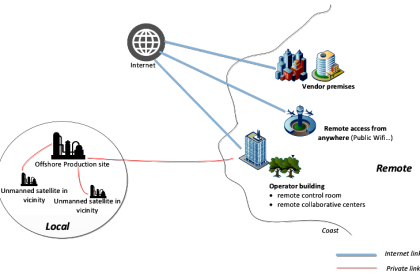With increased access to tech tools and knowledge, the frequency of cyber-attacks is increasing at an alarming rate. The same is true for the severity of these attacks. All businesses globally are doing their best to safeguard their systems and networks from this menace.
Cybercrime is expected to cause $8 trillion in damages worldwide in 2023. According to Cybersecurity Ventures, during the next three years, the cost of cybercrime will increase by 15% yearly, reaching $10.5 trillion annually by 2025 from $3 trillion in 2015.
Let’s go through the most common types of cyber-attacks in detail and understand why acquiring an ethical hacking certification is the need of the hour:
What is a Cyber Attack?
A cyber attack is an attempt to infiltrate a computer, computing system, or computer network without authorization to cause harm.
Cyberattacks strive to damage, disrupt, demolish, or take control of computer systems and change, block, delete, modify, or capture the information stored within these systems.
The Rise of Cyber Attacks
Various reports suggest that over 80% of organizations worldwide have their security compromised by cybercrime. The fundamental reason for this is that because this kind of crime is carried out in the virtual world, authorities have limited ability to oversee cyberattacks.
Besides, businesses must also ensure that they have effective technology and policies in place to ensure their security and stop long-term damage from being done by cybercriminals. An ethical hacking certification should be compulsory for employees appointed to vulnerable positions.
Types of Cyber Attacks
The following are the two major types of cyber-attacks:
| Web-based Attacks | System-based Attacks |
| Web application attacks, or web server attacks, refer to any attempt by a cybercriminal to compromise the security of web-based applications and websites. Some examples are bots, DDoS attacks, SQL Injections, and Cross-site Scripting. | These types of cyberattacks aim to harm a computer system or computer network. Here, a harmful software program that, when run, inserts copies of itself into other programs. Additionally, it can carry out commands that harm the system. Examples are viruses, worms, backdoors, etc. |
20 Most Common Types of Cyber Attacks in 2023

Cybercriminals utilize advanced techniques to target businesses in today’s digitally connected environment. Personal computers, computer networks, IT infrastructure, and IT systems are among their assault targets.
And among the frequent forms of cyberattacks are:
Phishing Attacks
These take place when a malicious user transmits emails that appear to be from reliable, credible resources to obtain sensitive data from the target.
The malicious party might send you a link that directs you to a website where you are tricked into downloading software such as viruses or providing the attacker with your data to carry out the attack.
Spear Phishing Attacks
The attacker spends time learning about their chosen victims before crafting communications that are likely to be of personal interest to them.
A spear-phishing assault frequently uses email spoofing, in which the “From” line of the email is altered to make it appear as though a different sender is sending it. This might be a friend, business partner, or someone that the target trusts from their social platform.
Whale Phishing Attacks
A whale-phishing attack gets its name because it attacks a company’s “big fish” or “whales,” who are often the company leaders. These people probably possess information that attackers could use to their advantage.
A selected “whale” who downloads ransomware is more likely to shell out the demanded ransom to stop word of the major attack from harming their image or the company’s brand.
Drive-by Attacks
A hacker uses a drive-by assault to infect an insecure website with malicious code. The script automatically runs on a user’s computer once they visit the website, corrupting it.
The term “drive-by” refers to the notion that all it takes for a victim to become infected is for them to “drive-by” the site and visit it.
Ransomware
The victim’s computer is held captive by ransomware unless they accept to pay the perpetrator a ransom.
The attacker then gives instructions on how the victim might reclaim command of their computer after the ransom has been received. Ransomware assault victim downloads malicious software, typically from an email attachment or a website.
Password Attack
A hacker uses software and password-cracking techniques, including Aircrack, Hashcat, Abel, John the Ripper, Cain, etc., to decipher your password.
Password attacks can take many different forms, including dictionary attacks, brute force attacks, and keylogger attacks.
Eavesdropping Attacks
Attackers using eavesdropping techniques intercept network traffic while it is being sent through the system. An attacker might do this to get a username, password, and other private data like credit card numbers.
You can actively or passively eavesdrop. Active eavesdropping involves the hacker inserting software into the network traffic stream to gather the information that is then analyzed for usable information.
In passive eavesdropping, the hacker “listens in,” or eavesdrops on the communications, looking for the valuable information they can take.
Malware Attacks
Malware affects a computer’s performance, damages data, or eavesdrops on user activity or network information as it travels through.
It can either persist and affect its host device or move from one platform to another. A malware attack requires the target device to have the program installed.
Trojans
A Trojan horse attack uses a malicious application cloaked inside a seemingly trustworthy one. The software within a trojan establishes a gateway into the system whenever the user runs the ostensibly innocent program, allowing hackers to break into the system or device.
An unwary user may let an apparently harmless application enter their machine only to introduce a secret danger.
Man-in-the-Middle Attacks
The term “man-in-the-middle” (MITM) attacks refer to cybersecurity flaws that allow an intruder to eavesdrop on data being transferred back and forth between two users, networks, or machines.
The two parties participating in a MITM attempt believe they are speaking to one another normally. They are unaware that the person delivering the communication accesses or edits it before it gets to its intended recipient.
DoS and DDoS Attacks
DoS (Denial-of-Service) attacks put enterprises at considerable risk. In this situation, hackers attack networks, servers, or systems to drain their resources and internet speed.
The website controls either crash or load slowly when this happens because the servers become overloaded with processing requests.
URL Interpretation
Attackers can access the professional and personal data of their target by modifying and fabricating specific URL addresses and using them in their attacks. After “interpreting” this syntax, the attacker uses it to determine how to gain access to restricted locations.
A hacker might guess URLs they could use to get admin access to a website or to hack the site’s back end to enter a user’s account to carry out a URL interpretation attack.
DNS Spoofing
In DNS spoofing, a hacker modifies DNS records to direct traffic to a phony or “spoofed” website. The target might enter private information on the fake website, which the hacker may exploit or sell.
The hacker might also create a subpar website with offensive or provocative information to harm the reputation of a rival business.
Session hijacking
This attack involves the hijacking of a client-server session. The server carries on the session unaware that it is interacting with the attacker rather than the client when the attacker’s computer replaces its Internet Protocol (IP) address for the client’s computer.
The server utilizes the client’s IP address to confirm its identity, making this type of attack effective.
Brute force Attack
The assailant only attempts to guess the login information of somebody who has access to the target network. If they do it correctly, they are admitted.
Attackers frequently employ bots to breach the credentials, although it may seem tedious and challenging to do so. The attacker gives the bot a set of login credentials that they believe could get them entry to the secure area.
Cross-site scripting (XSS)
It is the act of an attacker sending harmful scripts to a target’s browser through clickable content. The script is launched when the recipient clicks on the content.
A web application accepts the user’s input as genuine because they have already logged into that session. However, the attacker changed the script that was performed, which led to the “user” acting inadvertently.
SQL Injection
SQL Injection is a popular hack used to exploit websites that employ databases to serve customers.
Clients access servers for information, and a SQL attack takes advantage of a SQL query sent by a client to a server database.
Insider Threats
People working inside a company have access to a range of systems and administrative rights that give them the ability to make important adjustments to the system’s security regulations.
Additionally, employees frequently have a thorough awareness of the organization’s cybersecurity framework and how the company responds to attacks.
Birthday Attacks
In these attacks, hackers utilize hash algorithms, which are meant to confirm the authenticity of messages to get access to the system.
The communication recipient verifies the hash algorithm, which functions as a digital signature, before accepting it as authentic.
A hacker can easily substitute the sender’s message with their version if they can produce a hash that is similar to the one that was appended to the message by the sender.
Become an Ethical Hacker
KnowledgeHut offers a hacking certification that will help you comprehend and learn the most recent hacking tools, tactics, and strategies. With the help of this ethical hacking training, learn you’ll learn how to defend your business against malevolent hackers.
The ethical hacking certification program training is centered on the most recent security risks, sophisticated attack vectors, and hands-on, in-person examples of the most recent hacking techniques, methodology, tools, tips, and security measures.
You will develop practical skills through engaging seminars with hands-on laboratories as you explore your newly acquired information by scanning, hacking, and safeguarding your systems.
Conclusion
The vulnerability and danger of cyberattacks have grown due to technological innovation. It is wise to be knowledgeable about cyberattacks, and network security gave rise to cybercrimes today.
There is a need to close the cybersecurity skills gap and address the scarcity of cyber expertise due to the growing intensity and regularity of cyber-attacks. Mainstreaming internet usage safe practices and educating staff about various cyber-attacks is imperative.
















